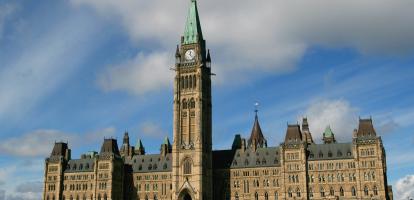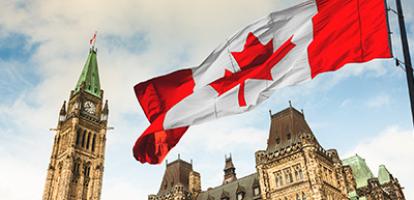On Wednesday, the Bank of Canada left its target for the overnight rate at 25 basis points while scaling back its quantitative easing (QE) program, reducing the pace of its purchases of Government of Canada debt from $3-billion a week to $2-billion. Lifting its foot off the QE pedal is warranted given recent inflation readings and other underlying metrics. At the same time, however, the unchanged overnight rate target actually represents an easing of monetary policy since the bank’s last announcement six weeks ago, because inflation expectations have increased, and the recovering economy has probably raised the level of the overnight rate that would be consistent with steady growth and 2-per-cent inflation.
Let’s unpack these two changes, starting with inflation expectations, and then consider what the implications are for the bank’s policy down the road.
There are several ways to measure inflation expectations in Canada. None are perfect, but how they change over time is probably more telling than their levels. First, the economic analysis departments of Canada’s six major commercial banks have moved their forecasts up over the past six weeks. Their average forecast for inflation during 2021 has increased from 2.45 per cent six weeks ago to 2.83 per cent, and their average forecast for 2022 has gone from 2.32 per cent to 2.48 per cent. Second, the Bank of Canada’s survey of consumer expectations (released on July 5) showed a spike in one-year-ahead inflation expectations of almost a full percentage point. Third, the spread between nominal and real return on long-term Government of Canada bonds (a measure of longer-term inflation expectations) moved up from 1.57 per cent in January to 1.83 per cent in May, before backing off slightly to 1.73 per cent in June. Still below 2 per cent – a good thing – but telling in its direction.
The increase in inflation expectations is an adjustment to realized inflation and reflects a bet that recent higher inflation is more than a blip. Headline inflation moved up from 3.4 per cent to 3.6 per cent between April and May, putting a dent in the idea that the April number was just a “base effect” (an unusually low level of prices in April, 2020, at the height of the first round of pandemic lockdowns). Moreover, all of the bank’s core measures, designed to capture underlying inflation, increased between April and May. The annualized three-month increase in two of the bank’s three preferred core measures, “CPI-trim” and “CPI-median”, were 3.5 and 3.1 per cent, respectively, in May. And, according to the bank’s July Monetary Policy Report, headline inflation is expected to sit slightly above 2 per cent in the medium term.
Higher inflation expectations mean that the bank’s real policy rate (the overnight rate target minus expected inflation) is lower, and thus more stimulative. Which brings us to the second consideration: what the current state of the economy implies for the neutral level of the policy rate.
This equilibrium neutral rate equates planned savings to planned investment. Let’s look first at what is happening with household savings, and then briefly at planned investment.
The lack of spending opportunities during the lockdowns combined with the federal government’s income support programs led to record saving rates by Canadian households. The saving rate in the second quarter of 2020 was 27.2 per cent, which was historically unprecedented. The saving rate has come down as the economy gradually reopens, but is still, at 13.1 per cent in the first quarter of 2021, higher than at any point since 1993. The bank’s survey of consumer expectations showed that households plan to run down those savings.
Investment is also picking up. The bank’s Business Outlook Survey (also published on July 5) reports a continued improvement in business sentiment, with expected increases in sales leading to plans to hire more staff and invest in increased productive capacity.
A reduction in planned savings and more planned investment necessarily means a higher neutral rate. A higher neutral rate with a fixed overnight rate means a more stimulative monetary policy.
What are the implications for policy? With the bank’s policy rate at its effective lower bound, higher inflation expectations combined with a higher neutral rate suggests policy is more stimulative than it was six weeks ago.
What this means is that further tightening is likely required, which can be accomplished through further reductions in bond purchases as a first step. Eventually, it could mean bringing forward the timing for rate hikes, which Wednesday’s announcement suggested would not happen until the second half of 2022.
Sometimes an unchanging overnight rate can still be stimulative. That was the case this time around, with savings and investment picking up, and inflation expectations higher than in June. For Bank of Canada watchers, further tightening may not be far down the line.
Steve Ambler, a professor of economics at the Université du Québec à Montréal (Retired), is the David Dodge Chair in Monetary Policy at the C.D. Howe Institute, where Jeremy Kronick is Associate Director, Research.





